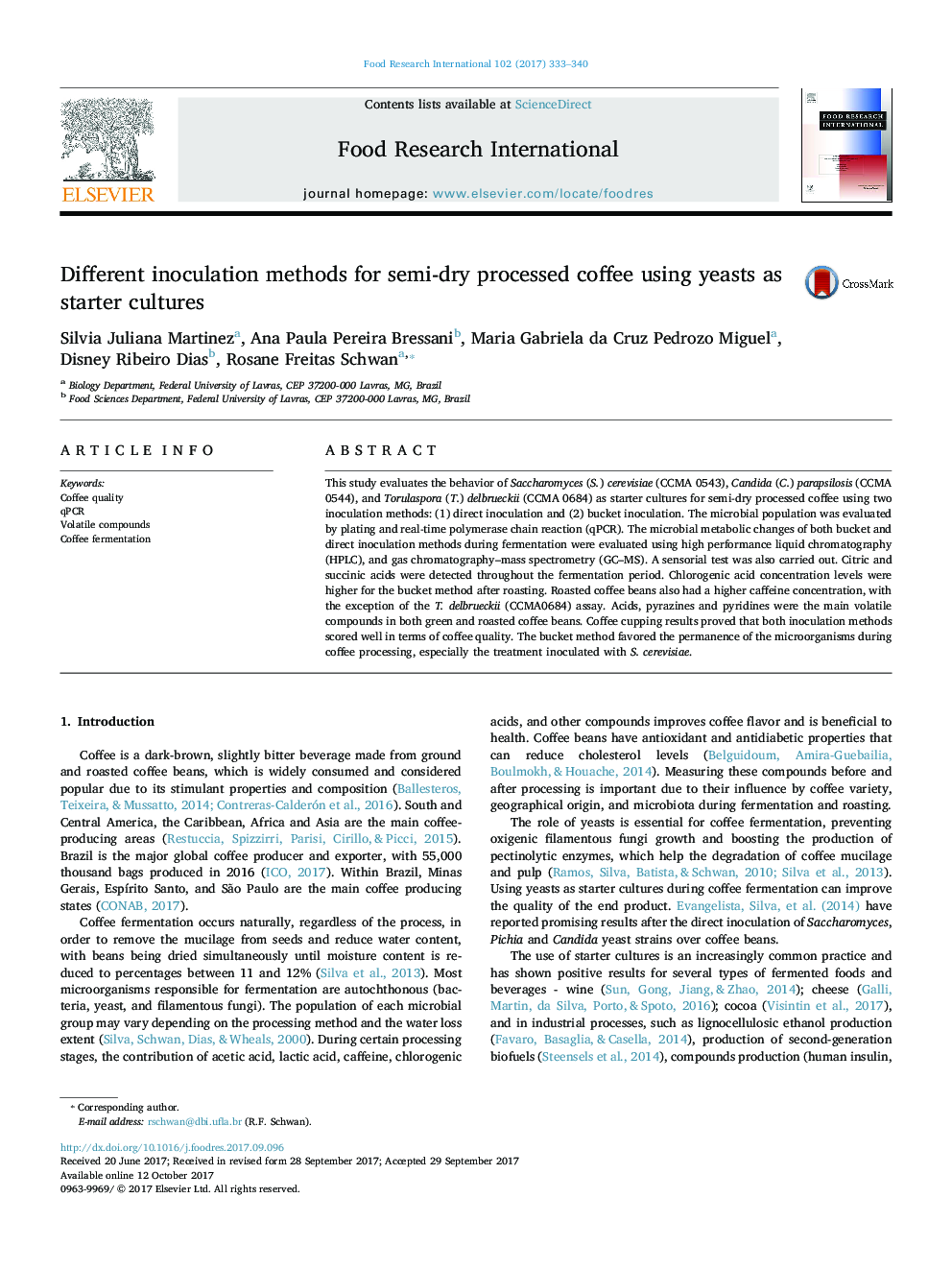| Article ID | Journal | Published Year | Pages | File Type |
|---|---|---|---|---|
| 5767781 | Food Research International | 2017 | 8 Pages |
â¢Bucket inoculation method improved the permanency of yeasts.â¢Sensory analysis of Catuaà Amarelo of coffee inoculated with yeasts.â¢S. cerevisiae CCMA 0543 contributes to permanency of bacteria during the semi-dry process.â¢The inoculation method influenced the S. cerevisiae CCMA 0543, C. parapsilosis CCMA 0544 and T. delbrueckii CCMA 0684 growth.
This study evaluates the behavior of Saccharomyces (S.) cerevisiae (CCMA 0543), Candida (C.) parapsilosis (CCMA 0544), and Torulaspora (T.) delbrueckii (CCMA 0684) as starter cultures for semi-dry processed coffee using two inoculation methods: (1) direct inoculation and (2) bucket inoculation. The microbial population was evaluated by plating and real-time polymerase chain reaction (qPCR). The microbial metabolic changes of both bucket and direct inoculation methods during fermentation were evaluated using high performance liquid chromatography (HPLC), and gas chromatography-mass spectrometry (GC-MS). A sensorial test was also carried out. Citric and succinic acids were detected throughout the fermentation period. Chlorogenic acid concentration levels were higher for the bucket method after roasting. Roasted coffee beans also had a higher caffeine concentration, with the exception of the T. delbrueckii (CCMA0684) assay. Acids, pyrazines and pyridines were the main volatile compounds in both green and roasted coffee beans. Coffee cupping results proved that both inoculation methods scored well in terms of coffee quality. The bucket method favored the permanence of the microorganisms during coffee processing, especially the treatment inoculated with S. cerevisiae.
Graphical abstractDownload high-res image (339KB)Download full-size image
